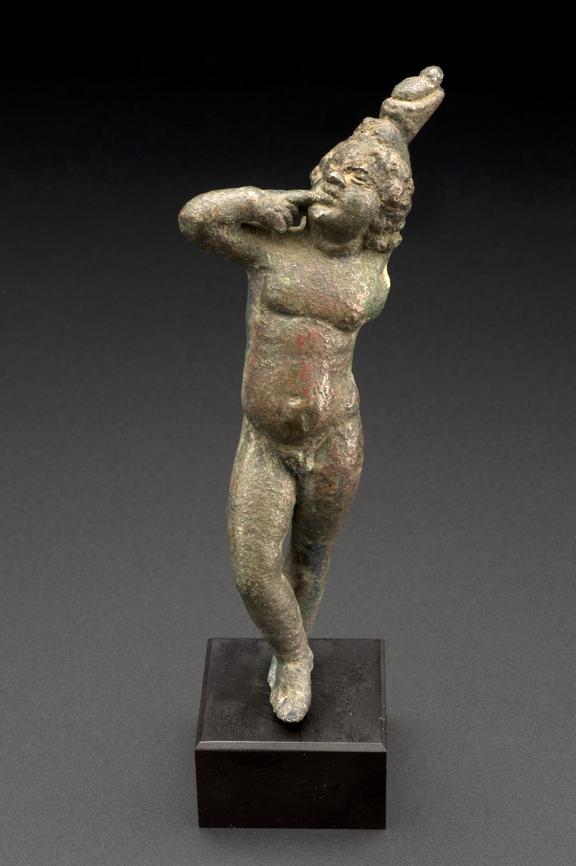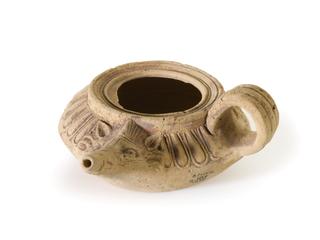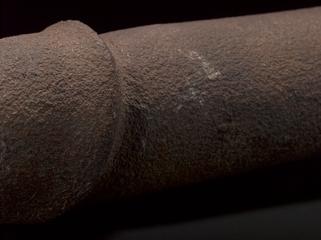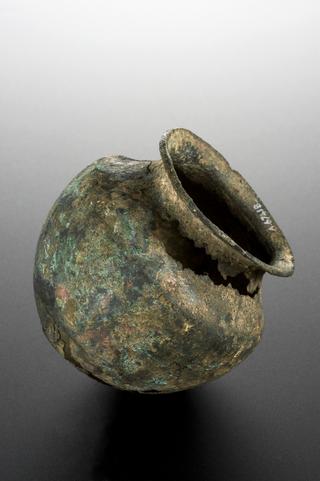
Bronze statue of 'Fat Horus', Egypt, 100 BCE-100 CE
- Made:
- 100 BCE-100 CE in Egypt

Bronze statuette, Fat Horus, Roman period, Egypt, 100BC-100AD
Horus is the son of the Egyptian gods Isis and Osiris and is sometimes shown as an infant sucking his thumb. In this statue he is holding a horn of plenty, a symbol of plenitude, and is wearing the crowns of Upper and Lower Egypt. Horus was also worshipped as a sky god and is often depicted as a man with the head of a falcon. The Eye of Horus was believed to act as a protective amulet with healing properties.
This object was bought by Henry Wellcome during a trip to Egypt. Wellcome also built up a network of agents to buy on his behalf.
Details
- Category:
- Classical & Medieval Medicine
- Collection:
- Sir Henry Wellcome's Museum Collection
- Object Number:
- A10038
- Materials:
- bronze and plastic (unidentified)
- Measurements:
-
overall: 128 mm x 40 mm x 50 mm, .21 kg
statue: 110 mm x 40 mm x 50 mm,
- type:
- statue
- credit:
- On loan from the Wellcome Trust




